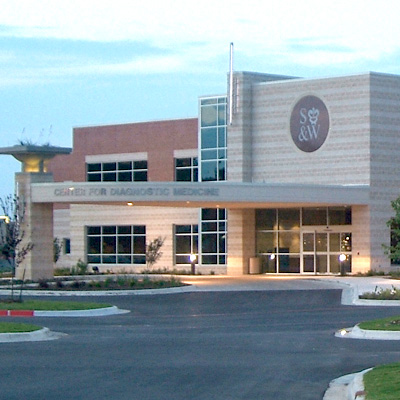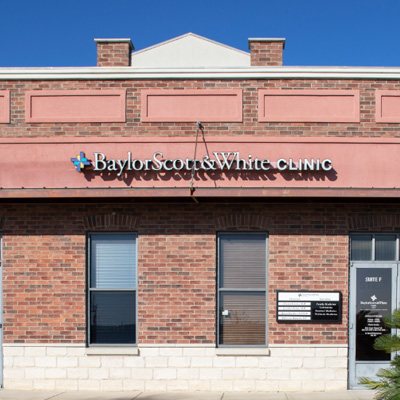What is a UTI?
A urinary tract infection (UTI) is an infection that occurs when bacteria enter the urinary tract. These infections develop in the urethra, bladder and kidneys, which are typically sterile environments that have natural mechanisms, such as urination, to keep bacteria out. However, bacteria can sometimes overcome these natural mechanisms, resulting in a UTI.
UTIs are among the most common infections people experience, especially among women. More than half of all women experience a UTI at some point in their lives.
Fortunately, your primary care or women’s health provider can treat UTIs easily and effectively with antibiotics, giving you relief from your symptoms.
What are the different types of UTIs?
Bacteria can travel to any part of the urinary tract. The type of UTI you have is based on the location of the infection.
- Bladder infections: Also known as cystitis, bladder infections are the most common type of UTI. If not treated and cured, a bladder infection can spread to the kidneys or upper urinary tract.
- Kidney infections: Most kidney infections start as bladder infections and develop when bacteria travel to the kidneys. You can develop kidney infections, also called pyelonephritis, in one or both kidneys.
- Recurrent UTIs: Recurrent UTIs are defined as UTIs that happen more frequently than twice every six months or three times a year. They can be associated with anatomical problems that increase the risk of UTIs, as well as certain pelvic floor disorders.
What are the symptoms of a UTI?
UTIs don’t always cause symptoms, but when they do, they may include:
- Pain in the flank, abdomen, pelvic area or lower back
- Pressure in the lower pelvis
- Cloudy or unpleasant-smelling urine
- Urinary incontinence
- Frequent urination
- Urge incontinence
- Painful urination (dysuria)
- Blood in the urine (hematuria)
Additional symptoms can include:
- Pain in the genitals
- Extreme fatigue
- Fever and chills
- Nausea and vomiting
- Mental changes or confusion
When to see a doctor
Visit your healthcare provider if you have symptoms of a UTI. UTIs don’t go away on their own, and early medical attention allows you to find relief from your symptoms and prevents a bladder infection from turning into a kidney infection.
Causes of UTIs
Urinary tract infections are typically caused by bacteria, with E. coli responsible for over 90% of bladder infections. E. coli normally lives in the lower intestines but can enter the urethra, infect the bladder and potentially travel up the ureters to the kidneys.
UTI risk factors
Being female is a primary risk factor for UTIs, with women being nearly four times more likely than men to develop these infections due to their anatomy. The shorter female urethra is closer to the rectum, increasing the risk of bacteria entering the urinary tract.
Additional risk factors include:
- Sexual activity: Intercourse can introduce bacteria to the urethra, increasing UTI risk.
- Birth control: Diaphragms can pressure the urethra, preventing full bladder emptying, while spermicides can disrupt beneficial bacteria, both raising UTI risk.
- Medical conditions: Conditions like diabetes, spinal cord injuries or long-term catheter use can impair bladder function and increase infection risk.
- History of UTIs: A previous UTI increases the likelihood of future infections, with about one-quarter of women experiencing a second UTI within six months.
- Pregnancy: UTIs are common during pregnancy and can lead to low birth weight or premature delivery if untreated.
- Menopause: Reduced estrogen levels during menopause can cause dryness and irritation in the urethra and vagina, increasing UTI risk.
- Constipation: Long-term constipation can cause fecal incontinence, which is a risk factor for developing a UTI.
Complications
When treated promptly, lower urinary tract infections rarely lead to complications. However, if left untreated, UTIs can cause serious health issues.
Possible complications of a UTI include:
- Repeated infections: Having more than two UTIs within six months or three or more within a year
- Permanent kidney damage: Resulting from a kidney infection due to an untreated UTI
- Premature or low birth weight delivery: If a UTI occurs during pregnancy
- Narrowed urethra in men: From repeated urethral infections
- Sepsis: A potentially life-threatening condition that can occur if the infection spreads to the kidneys and into the bloodstream
How are UTIs diagnosed?
Your primary care or women’s health provider can diagnose a UTI. They’ll start by asking about your symptoms and health history and then order a urine test and, potentially, other types of imaging tests.
Urinalysis
For urinalysis, you urinate into a small cup, and your healthcare provider submits the urine sample to a laboratory. A lab technician will analyze the sample for bacteria or white blood cells, which may indicate a urinary tract infection.
Urine culture
If you have recurrent UTIs or a medical condition, the lab may also culture the urine sample to see what type of bacteria is causing your infection.
Imaging tests
If your infection doesn’t respond to treatment, your provider may order the following tests to check your urinary tract for any disease or injury:
- Ultrasound: Recurrent UTIs may be due to a structural issue in the urinary tract. An ultrasound, a painless imaging test that requires no preparation, allows your provider to examine your internal organs.
- Computed tomography (CT) scan: Your provider may order a CT scan if they think you have a kidney infection. These imaging tests can show blockages or other structural problems in your urinary tract that may need treatment.
Cystoscopy
A cystoscopy is an imaging test your provider may order if you have frequent, repeated or complicated UTIs. The test involves a tube called a cystoscope that has a small camera on the end. The scope is inserted into your urethra so your provider can see signs of infection.
UTI treatments
For many people, a course of antibiotics can treat bladder and kidney infections effectively within just a few days. Your provider will choose an antibiotic based on the type of bacteria causing your infection and may give you additional medications for pain and other symptoms.
Take the full course of your UTI medication as directed by your provider, even if you begin to feel better. Contact your provider if your antibiotic causes you to feel nauseous or dizzy, or you experience other side effects. In addition to taking antibiotics for a UTI, you can try home remedies to reduce your symptoms.
The following steps can help:
- Drink plenty of water
- Limit caffeine and carbonated drinks, which may irritate the bladder
- Urinate frequently
How to prevent a UTI
Some UTIs can be tied to your lifestyle and daily habits. You can help prevent UTIs by being more mindful of when and how often you use the bathroom and how much water you drink.
-
Choose another birth control method
If you use spermicides or a diaphragm, talk to your provider about alternatives. You can find short- and long-term contraception that is effective and has fewer side effects.
-
Change your bathroom habits
Urinating plays a key role in flushing bacteria from your body. Since urine is a waste product, emptying your bladder helps remove waste and reduce the risk of infection, especially if you're prone to UTIs.
Frequent urination can lower your chances of developing an infection. It's also important to urinate before and after sex, as this helps flush out bacteria that may enter the urethra during intercourse. If you’re unable to urinate, washing the area with warm water can also help.
-
Drink plenty of water
Drink lots of water, and you’ll urinate more often. This helps keep bad bacteria out of your urinary tract. Increasing your water intake can also help prevent frequent or recurrent UTIs.
-
Practice good bathroom hygiene
- Completely empty your bladder every time you urinate.
- Wipe from the front to the back to avoid introducing bacteria from your anus to your urethra.
- Don’t use douches or other products on or near the genitals.
- Opt for showers instead of baths.
- Wash your genitals and anus daily.
Find specialized care for a urinary tract infection
We help you get care at a location that fits your needs. We offer several locations for your care, including specialized urology centers in North and Central Texas.

Baylor Scott & White - The Brenham Clinic
600 N Park St , Brenham, TX, 77833
- Monday: 7:30 am - 5:00 pm
- Tuesday: 7:30 am - 5:00 pm
- Wednesday: 7:30 am - 5:00 pm
- Thursday: 7:30 am - 5:00 pm
- Friday: 7:30 am - 5:00 pm

Baylor Scott & White 65+ Clinic
4716 Alliance Blvd Ste 500, Plano, TX, 75093
- Monday: 8:00 am - 4:30 pm
- Tuesday: 8:00 am - 4:30 pm
- Wednesday: 8:00 am - 4:30 pm
- Thursday: 8:00 am - 4:30 pm
- Friday: 8:00 am - 4:30 pm

Baylor Scott & White Center for Diagnostic Medicine - Temple
1605 S 31st St , Temple, TX, 76508

Baylor Scott & White CitySquare
2835 Al Lipscomb Way , Dallas, TX, 75215
- Monday: 8:00 am - 5:00 pm
- Tuesday: 8:00 am - 5:00 pm
- Wednesday: 8:00 am - 5:00 pm
- Thursday: 8:00 am - 5:00 pm
- Friday: 8:00 am - 5:00 pm

Baylor Scott & White Clinic - Austin Avery Ranch
10526 W Parmer Ln Ste 409, Austin, TX, 78717
- Monday: 8:00 am - 5:00 pm
- Tuesday: 8:00 am - 5:00 pm
- Wednesday: 8:00 am - 5:00 pm
- Thursday: 8:00 am - 5:00 pm
- Friday: 8:00 am - 5:00 pm
- Monday: 8:00 am - 4:00 pm
- Tuesday: 8:00 am - 4:00 pm
- Wednesday: 8:00 am - 4:00 pm
- Thursday: 8:00 am - 4:00 pm
- Friday: 8:00 am - 4:00 pm

Baylor Scott & White Clinic - Austin Circle C
5000 W Slaughter Ln Building 6, Ste 100, Austin, TX, 78749
- Monday: 8:00 am - 5:00 pm
- Tuesday: 8:00 am - 5:00 pm
- Wednesday: 8:00 am - 5:00 pm
- Thursday: 8:00 am - 5:00 pm
- Friday: 8:00 am - 5:00 pm

Baylor Scott & White Clinic - Austin Downtown
200 E Cesar Chavez St Ste G140, Austin, TX, 78701
- Monday: 8:00 am - 5:00 pm
- Tuesday: 8:00 am - 5:00 pm
- Wednesday: 8:00 am - 5:00 pm
- Thursday: 8:00 am - 5:00 pm
- Friday: 8:00 am - 5:00 pm

Baylor Scott & White Clinic - Austin Jollyville Road
11673 Jollyville Rd Ste 205, Austin, TX, 78759
- Monday: 8:00 am - 4:30 pm
- Tuesday: 8:00 am - 4:30 pm
- Wednesday: 8:00 am - 4:30 pm
- Thursday: 8:00 am - 4:30 pm
- Friday: 8:00 am - 3:00 pm
- Monday: 8:00 am - 3:00 pm
- Tuesday: 8:00 am - 3:00 pm
- Wednesday: 8:00 am - 3:00 pm
- Thursday: 8:00 am - 3:00 pm
- Friday: 8:00 am - 2:00 pm

Baylor Scott & White Clinic - Austin North Burnet
2608 Brockton Dr , Austin, TX, 78758
- Monday: 8:00 am - 5:00 pm
- Tuesday: 8:00 am - 5:00 pm
- Wednesday: 8:00 am - 5:00 pm
- Thursday: 8:00 am - 5:00 pm
- Friday: 8:00 am - 5:00 pm

Baylor Scott & White Clinic - Austin Northwest
9800 N Lake Creek Pkwy Ste 200, Austin, TX, 78717
- Monday: 8:00 am - 5:00 pm
- Tuesday: 8:00 am - 5:00 pm
- Wednesday: 8:00 am - 5:00 pm
- Thursday: 8:00 am - 5:00 pm
- Friday: 8:00 am - 5:00 pm

Baylor Scott & White Clinic - Austin Oak Hill
5251 US 290 , Austin, TX, 78735
- Monday: 8:00 am - 5:00 pm
- Tuesday: 8:00 am - 5:00 pm
- Wednesday: 8:00 am - 5:00 pm
- Thursday: 8:00 am - 5:00 pm
- Friday: 8:00 am - 5:00 pm

Baylor Scott & White Clinic - Austin Onion Creek
11209 S Interstate 35 , Austin, TX, 78747
- Monday: 7:15 am - 6:00 pm
- Tuesday: 7:15 am - 6:00 pm
- Wednesday: 7:15 am - 6:00 pm
- Thursday: 7:15 am - 6:00 pm
- Friday: 7:15 am - 6:00 pm
- Monday: 8:20 am - 4:00 pm
- Tuesday: 8:20 am - 4:00 pm
- Wednesday: 8:20 am - 4:00 pm
- Thursday: 8:20 am - 4:00 pm
- Friday: 8:20 am - 4:00 pm

Baylor Scott & White Clinic - Austin River Place
10815 Ranch Rd 2222 , Austin, TX, 78730
- Monday: 8:00 am - 5:00 pm
- Tuesday: 8:00 am - 5:00 pm
- Wednesday: 8:00 am - 5:00 pm
- Thursday: 8:00 am - 5:00 pm
- Friday: 8:00 am - 5:00 pm

Baylor Scott & White Clinic - Austin Southwest
9521 US 290 Ste 105, Austin, TX, 78736
- Monday: 8:00 am - 5:00 pm
- Tuesday: 8:00 am - 5:00 pm
- Wednesday: 8:00 am - 5:00 pm
- Thursday: 8:00 am - 5:00 pm
- Friday: 8:00 am - 5:00 pm

Baylor Scott & White Clinic - Austin Tech Ridge
500 Canyon Ridge Dr Ste 208, Austin, TX, 78753
- Monday: 8:00 am - 5:00 pm
- Tuesday: 8:00 am - 5:00 pm
- Wednesday: 8:00 am - 5:00 pm
- Thursday: 8:00 am - 5:00 pm
- Friday: 8:00 am - 5:00 pm

Baylor Scott & White Clinic - Bee Cave
16018 W SH 71 , Bee Cave, TX, 78738
- Monday: 8:00 am - 5:00 pm
- Tuesday: 8:00 am - 5:00 pm
- Wednesday: 8:00 am - 5:00 pm
- Thursday: 8:00 am - 5:00 pm
- Friday: 8:00 am - 5:00 pm

Baylor Scott & White Clinic - Belton
1505 N Main St , Belton, TX, 76513
- Monday: 7:00 am - 7:00 pm
- Tuesday: 7:00 am - 7:00 pm
- Wednesday: 7:00 am - 7:00 pm
- Thursday: 7:00 am - 7:00 pm
- Friday: 7:00 am - 5:00 pm
- Saturday: 8:00 am - 12:00 pm
- Monday: 7:30 am - 4:00 pm
- Tuesday: 7:30 am - 4:00 pm
- Wednesday: 7:30 am - 4:00 pm
- Thursday: 7:30 am - 4:00 pm
- Friday: 7:30 am - 4:00 pm

Baylor Scott & White Clinic - Belton Lake Road
309 Lake Rd , Belton, TX, 76513
- Monday: 7:00 am - 7:00 pm
- Tuesday: 7:00 am - 7:00 pm
- Wednesday: 7:00 am - 7:00 pm
- Thursday: 7:00 am - 7:00 pm
- Friday: 7:00 am - 7:00 pm

Baylor Scott & White Clinic - Belton South
1001 Arbor Park , Belton, TX, 76513
- Monday: 7:00 am - 7:00 pm
- Tuesday: 7:00 am - 7:00 pm
- Wednesday: 7:00 am - 7:00 pm
- Thursday: 7:00 am - 7:00 pm
- Friday: 7:00 am - 5:00 pm
- Saturday: 8:00 am - 12:00 pm
- Monday: 7:30 am - 4:00 pm
- Tuesday: 7:30 am - 4:00 pm
- Wednesday: 7:30 am - 4:00 pm
- Thursday: 7:30 am - 4:00 pm
- Friday: 7:30 am - 4:00 pm

Baylor Scott & White Clinic - Brenham Hwy 290
604 US 290 , Brenham, TX, 77833
- Monday: 7:00 am - 5:00 pm
- Tuesday: 7:00 am - 5:00 pm
- Wednesday: 7:00 am - 5:00 pm
- Thursday: 7:00 am - 7:00 pm
- Friday: 7:00 am - 5:00 pm
- Saturday: 8:00 am - 12:00 pm

Baylor Scott & White Clinic - Bryan Boonville
748 N Earl Rudder Fwy , Bryan, TX, 77802
- Monday: 7:30 am - 5:00 pm
- Tuesday: 7:30 am - 5:00 pm
- Wednesday: 7:30 am - 5:00 pm
- Thursday: 7:30 am - 5:00 pm
- Friday: 7:30 am - 5:00 pm

Baylor Scott & White Clinic - Bryan West Villa Maria Road
2612 W Villa Maria Rd , Bryan, TX, 77807
- Monday: 7:20 am - 5:10 pm
- Tuesday: 7:20 am - 5:10 pm
- Wednesday: 7:20 am - 5:10 pm
- Thursday: 7:20 am - 5:00 pm
- Friday: 7:20 am - 5:00 pm

Baylor Scott & White Clinic - Buda Medical Center
5330 Overpass Rd Ste 100, Buda, TX, 78610
- Monday: 8:00 am - 5:00 pm
- Tuesday: 8:00 am - 5:00 pm
- Wednesday: 8:00 am - 5:00 pm
- Thursday: 8:00 am - 5:00 pm
- Friday: 8:00 am - 5:00 pm

Baylor Scott & White Clinic - Burnet
1300 E Polk St , Burnet, TX, 78611
- Monday: 7:00 am - 5:00 pm
- Tuesday: 7:00 am - 5:00 pm
- Wednesday: 7:00 am - 5:00 pm
- Thursday: 7:00 am - 5:00 pm
- Friday: 7:00 am - 5:00 pm

Baylor Scott & White Clinic - Caldwell
1010 Woodson Dr , Caldwell, TX, 77836
- Monday: 7:30 am - 6:00 pm
- Tuesday: 7:30 am - 6:00 pm
- Wednesday: 7:30 am - 6:00 pm
- Thursday: 7:30 am - 6:00 pm
- Friday: 8:00 am - 5:00 pm

Baylor Scott & White Clinic - Cameron
101 Lafferty Ave Ste B, Cameron, TX, 76520
- Monday: 8:00 am - 5:00 pm
- Tuesday: 8:00 am - 5:00 pm
- Wednesday: 8:00 am - 5:00 pm
- Thursday: 8:00 am - 5:00 pm
- Friday: 8:00 am - 5:00 pm

Baylor Scott & White Clinic - Cedar Park
910 E Whitestone Blvd , Cedar Park, TX, 78613
- Monday: 8:00 am - 5:00 pm
- Tuesday: 8:00 am - 5:00 pm
- Wednesday: 8:00 am - 5:00 pm
- Thursday: 8:00 am - 5:00 pm
- Friday: 8:00 am - 5:00 pm
- Monday: 7:00 am - 5:00 pm
- Tuesday: 7:00 am - 5:00 pm
- Wednesday: 7:00 am - 5:00 pm
- Thursday: 7:00 am - 5:00 pm
- Friday: 7:00 am - 5:00 pm
- Saturday: 9:00 am - 2:00 pm

Baylor Scott & White Clinic - College Station Arrington Road
1296 Arrington Rd Ste 100, College Station, TX, 77845
- Monday: 7:20 am - 5:00 pm
- Tuesday: 7:20 am - 5:00 pm
- Wednesday: 7:30 am - 5:00 pm
- Thursday: 7:30 am - 5:00 pm
- Friday: 7:50 am - 5:00 pm
- Monday: 8:00 am - 4:30 pm
- Tuesday: 8:00 am - 4:30 pm
- Wednesday: 8:00 am - 4:30 pm
- Thursday: 8:00 am - 4:30 pm
- Friday: 8:00 am - 4:30 pm

Baylor Scott & White Clinic - College Station Midtown
4035 State Hwy 6 S , College Station, TX, 77845
- Monday: 7:00 am - 6:00 pm
- Tuesday: 7:00 am - 6:00 pm
- Wednesday: 7:00 am - 6:00 pm
- Thursday: 7:00 am - 6:00 pm
- Friday: 7:00 am - 6:00 pm
- Monday: 8:00 am - 5:00 pm
- Tuesday: 8:00 am - 5:00 pm
- Wednesday: 8:00 am - 5:00 pm
- Thursday: 8:00 am - 5:00 pm
- Friday: 8:00 am - 5:00 pm

Baylor Scott & White Clinic - College Station Rock Prairie
800 Scott and White Dr , College Station, TX, 77845
- Monday: 7:30 am - 5:00 pm
- Tuesday: 7:30 am - 5:00 pm
- Wednesday: 7:30 am - 5:00 pm
- Thursday: 7:30 am - 5:00 pm
- Friday: 7:30 am - 5:00 pm

Baylor Scott & White Clinic - College Station University Drive
1700 University Dr E , College Station, TX, 77840
- Monday: 8:00 am - 5:00 pm
- Tuesday: 8:00 am - 5:00 pm
- Wednesday: 8:00 am - 5:00 pm
- Thursday: 8:00 am - 5:00 pm
- Friday: 8:00 am - 5:00 pm

Baylor Scott & White Clinic - College Station Wellborn
15195 Wellborn Rd , College Station, TX, 77845
- Monday: 7:30 am - 5:30 pm
- Tuesday: 7:30 am - 5:30 pm
- Wednesday: 7:30 am - 5:30 pm
- Thursday: 7:30 am - 5:30 pm
- Friday: 7:30 am - 5:30 pm

Baylor Scott & White Clinic - Copperas Cove
239 W US Hwy 190 , Copperas Cove, TX, 76522
- Monday: 7:45 am - 5:00 pm
- Tuesday: 7:45 am - 5:00 pm
- Wednesday: 7:45 am - 5:00 pm
- Thursday: 7:45 am - 5:00 pm
- Friday: 7:45 am - 5:00 pm

Baylor Scott & White Clinic - Gatesville
319 S State Hwy 36 Bypass Ste 401, Gatesville, TX, 76528
- Monday: 8:00 am - 5:00 pm
- Tuesday: 8:00 am - 5:00 pm
- Wednesday: 8:00 am - 5:00 pm
- Thursday: 8:00 am - 5:00 pm
- Friday: 8:00 am - 5:00 pm
- Monday: 7:45 am - 4:00 pm
- Tuesday: 7:45 am - 4:00 pm
- Wednesday: 7:45 am - 4:00 pm
- Thursday: 7:45 am - 4:00 pm
- Friday: 7:45 am - 4:00 pm

Baylor Scott & White Clinic - Georgetown
4945 Williams Dr , Georgetown, TX, 78633
- Monday: 7:30 am - 5:00 pm
- Tuesday: 7:30 am - 5:00 pm
- Wednesday: 7:30 am - 5:00 pm
- Thursday: 7:30 am - 5:00 pm
- Friday: 7:30 am - 5:00 pm

Baylor Scott & White Clinic - Georgetown Central
1507 Rivery Blvd , Georgetown, TX, 78628
- Monday: 8:00 am - 5:00 pm
- Tuesday: 8:00 am - 5:00 pm
- Wednesday: 8:00 am - 5:00 pm
- Thursday: 8:00 am - 5:00 pm
- Friday: 8:00 am - 5:00 pm

Baylor Scott & White Clinic - Georgetown West
7451 W State Hwy 29 , Georgetown, TX, 78628
- Monday: 8:00 am - 5:00 pm
- Tuesday: 8:00 am - 5:00 pm
- Wednesday: 8:00 am - 5:00 pm
- Thursday: 8:00 am - 5:00 pm
- Friday: 8:00 am - 5:00 pm
- Monday: 8:00 am - 4:00 pm
- Tuesday: 8:00 am - 4:00 pm
- Wednesday: 8:00 am - 4:00 pm
- Thursday: 8:00 am - 4:00 pm
- Friday: 8:00 am - 4:00 pm

Baylor Scott & White Clinic - Hempstead
808 6th St , Hempstead, TX, 77445
- Monday: 8:00 am - 5:00 pm
- Tuesday: 8:00 am - 5:00 pm
- Wednesday: 8:00 am - 5:00 pm
- Thursday: 8:00 am - 5:00 pm
- Friday: 8:00 am - 5:00 pm

Baylor Scott & White Clinic - Hewitt
510 N Hewitt Dr , Hewitt, TX, 76643
- Monday: 8:00 am - 5:00 pm
- Tuesday: 8:00 am - 5:00 pm
- Wednesday: 8:00 am - 5:00 pm
- Thursday: 8:00 am - 5:00 pm
- Friday: 8:00 am - 5:00 pm

Baylor Scott & White Clinic - Horseshoe Bay
100 Pecan Crossing Dr , Horseshoe Bay, TX, 78657
- Monday: 7:00 am - 5:00 pm
- Tuesday: 7:00 am - 5:00 pm
- Wednesday: 7:00 am - 5:00 pm
- Thursday: 7:00 am - 5:00 pm
- Friday: 7:00 am - 5:00 pm

Baylor Scott & White Clinic - Hutto
120 Ed Schmidt Blvd Suites B, E & F, Hutto, TX, 78634
- Monday: 8:00 am - 5:00 pm
- Tuesday: 8:00 am - 5:00 pm
- Wednesday: 8:00 am - 5:00 pm
- Thursday: 8:00 am - 5:00 pm
- Friday: 8:00 am - 5:00 pm
- Monday: 8:00 am - 4:20 pm
- Tuesday: 8:00 am - 4:20 pm
- Wednesday: 8:00 am - 4:20 pm
- Thursday: 8:00 am - 4:20 pm
- Friday: 8:00 am - 2:50 pm

Baylor Scott & White Clinic - Johnson City
208 Haley Rd , Johnson City, TX, 78636
- Monday: 8:00 am - 5:00 pm
- Tuesday: 8:00 am - 5:00 pm
- Wednesday: 8:00 am - 5:00 pm
- Thursday: 8:00 am - 5:00 pm
- Friday: 8:00 am - 5:00 pm

Baylor Scott & White Clinic - Killeen
3801 Scott and White Dr , Killeen, TX, 76543
- Monday: 7:00 am - 7:00 pm
- Tuesday: 7:00 am - 7:00 pm
- Wednesday: 7:00 am - 7:00 pm
- Thursday: 7:00 am - 7:00 pm
- Friday: 7:00 am - 7:00 pm
- Saturday: 7:00 am - 7:00 pm

Baylor Scott & White Clinic - Killeen - Harker Heights
5702 E Central Texas Expy , Killeen, TX, 76543
- Monday: 7:00 am - 6:00 pm
- Tuesday: 7:00 am - 6:00 pm
- Wednesday: 7:00 am - 6:00 pm
- Thursday: 7:00 am - 6:00 pm
- Friday: 7:00 am - 5:00 pm
- Saturday: 8:00 am - 5:00 pm

Baylor Scott & White Clinic - Killeen West
4501 S Clear Creek Rd , Killeen, TX, 76549
- Monday: 7:15 am - 5:30 pm
- Tuesday: 7:15 am - 5:30 pm
- Wednesday: 7:15 am - 5:30 pm
- Thursday: 7:15 am - 5:30 pm
- Friday: 7:15 am - 5:30 pm

Baylor Scott & White Clinic - Kingsland
105 FM 2342 , Kingsland, TX, 78639
- Monday: 8:00 am - 5:00 pm
- Tuesday: 8:00 am - 5:00 pm
- Wednesday: 8:00 am - 5:00 pm
- Thursday: 8:00 am - 5:00 pm
- Friday: 8:00 am - 5:00 pm

Baylor Scott & White Clinic - Kyle
4036 Cromwell Dr , Kyle, TX, 78640
- Monday: 8:00 am - 5:00 pm
- Tuesday: 8:00 am - 5:00 pm
- Wednesday: 8:00 am - 5:00 pm
- Thursday: 8:00 am - 5:00 pm
- Friday: 8:00 am - 5:00 pm

Baylor Scott & White Clinic - Lago Vista
6502 Lohman Ford Rd , Lago Vista, TX, 78645
- Monday: 8:00 am - 5:00 pm
- Tuesday: 8:00 am - 5:00 pm
- Wednesday: 8:00 am - 5:00 pm
- Thursday: 8:00 am - 5:00 pm
- Friday: 8:00 am - 5:00 pm
- Monday: 8:00 am - 11:30 am
- Tuesday: 8:00 am - 11:30 am
- Wednesday: 8:00 am - 11:30 am
- Thursday: 8:00 am - 11:30 am
- Friday: 8:00 am - 11:30 am

Baylor Scott & White Clinic - Lakeway
3108 Ranch Rd 620 S , Lakeway, TX, 78738
- Monday: 8:00 am - 5:00 pm
- Tuesday: 8:00 am - 5:00 pm
- Wednesday: 8:00 am - 5:00 pm
- Thursday: 8:00 am - 5:00 pm
- Friday: 8:00 am - 5:00 pm

Baylor Scott & White Clinic - Lampasas
207 W Avenue E Ste 1100, Lampasas, TX, 76550
How we reviewed this page
-
February 10, 2025

